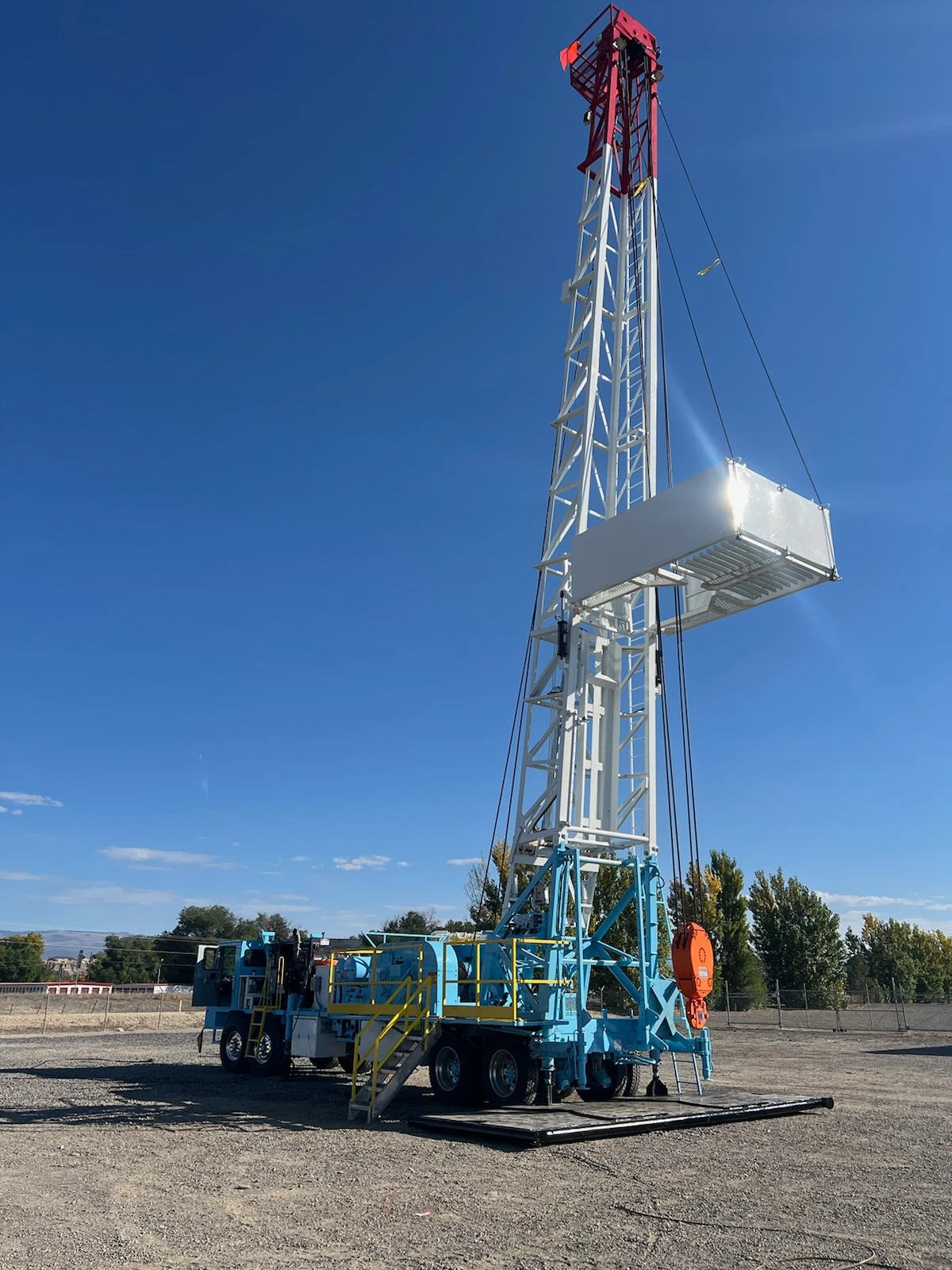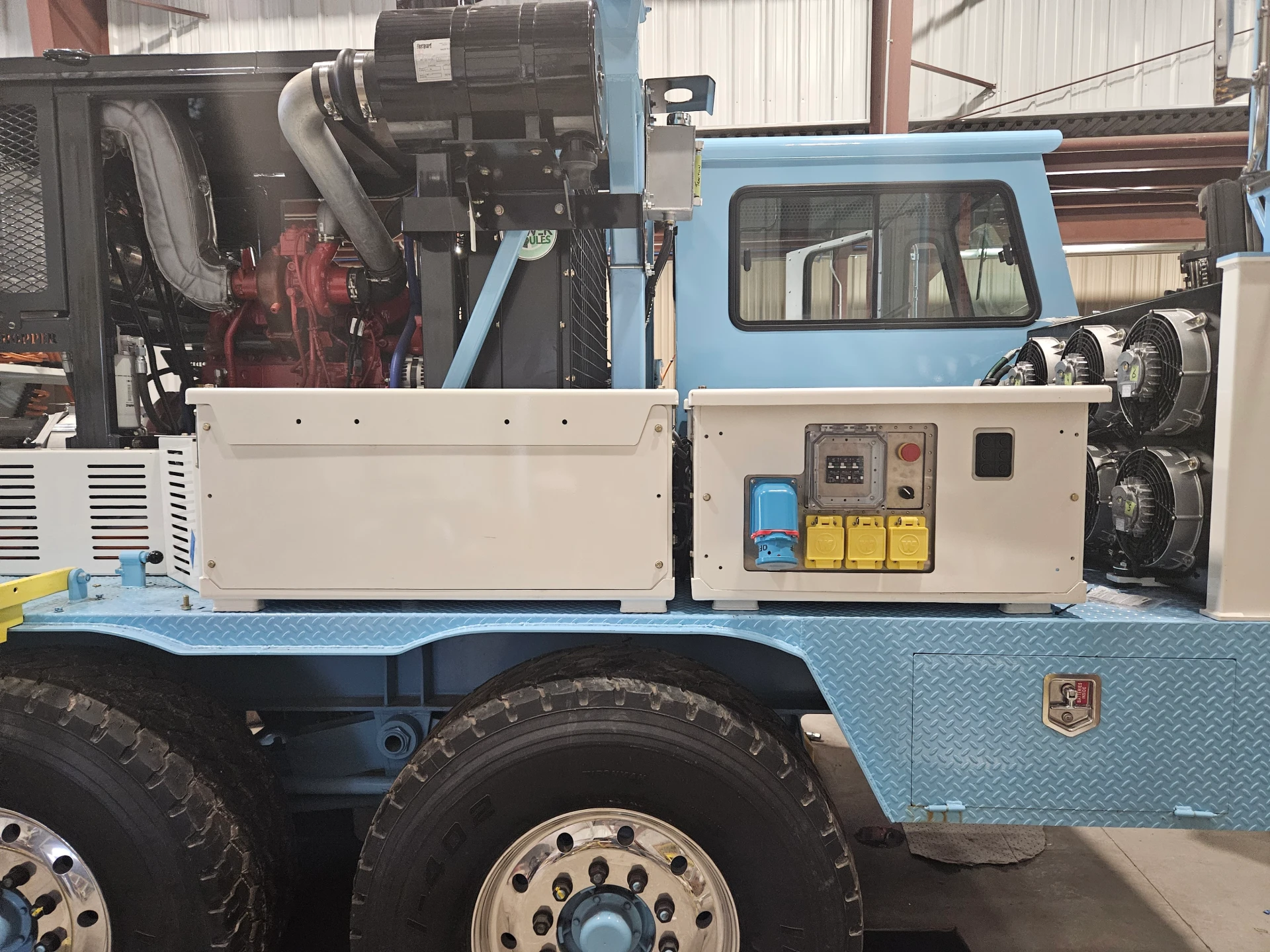Customer: Watson Hopper – USA
About The Project
Delta, Colorado-based Watson Hopper has been building, servicing and upgrading oilfield workover rigs since 1943. The rigs are an essential part of ensuring that oil extraction in the remains efficient.
The next evolution in Watson Hopper’s offering was to move to more powerful, more precise, quieter, and less fuel-intensive hybrid battery-electric/diesel rigs. The company engaged MEDATech for the conversion, which we completed in 60 weeks from order to field commissioning.
Solution

The truck’s conventional diesel engine previously ran flat-out, all day long. When we integrated a battery-electric AltDrive to power the drivetrain, the winch and all other systems, diesel engine runtime plummeted from 12 hours to just 1.5 hours, a fuel savings of over 85%. When battery State-of-Charge (SOC) dropped to a certain level, the rig’s original 385 hp Cummins ISL9 engine clicked on to recharge the batteries.
Fuel savings and reduced emissions are important, but the real story lies with significantly improved winch precision control and power, as well operators benefits: a calmer environment with much less noise and next to no vibration. Performance and operator experience improvements ended up being just as important as the fuel savings benefits.
This was our first implementation of AltDrive within a hybrid system—and it went according to plan, perhaps because we applied the MEDATech electrification project in phases:
Phase 1 – System Architecture – Collected operational data to understand the application, specified components and validated using simulations. We then developed a scope of work, including integration with existing controls on the rig.
Phase 2 – System Engineering – Developed a detailed design plan including component integration, unit testing development and validation, system integration development, and procurement.
Phase 3 – Prototype Build – Kit installation at MEDATech facility in Collingwood, Ontario.
Phase 4 – Onsite Commissioning – A team of MEDATech engineers spent three months onsite in Delta, Colorado, tuning and field testing.
Phase 5 – Project Close-Out – Integrated improvement opportunities into production kit design. Having gone from prototype to commercialized design in a little over a year, we quickly began turning out kits for four additional units, which would be used to convert rigs in Colorado.
Phase 6 – Service and Support – A critical phase of all our projects, this is where MEDATech Field Service Technicians provide field support and training during and after commissioning. The MEDATech service team is key to realizing future improvement opportunities.
Results
Exceptional power, improved precision, 85% reduction in diesel fuel consumption – these are all parts of a success story that saw increased market demand for this OEM solution. Watson Hopper’s story is very relevant to other mobile applications with intermittent peak power demands, as well as for off-grid range extension.

Services Provided
Highlights
- From order to delivery in 60 months
- 85%+ fuel savings
- Better winch precision & power
- Operator experience: much less noise & vibration
